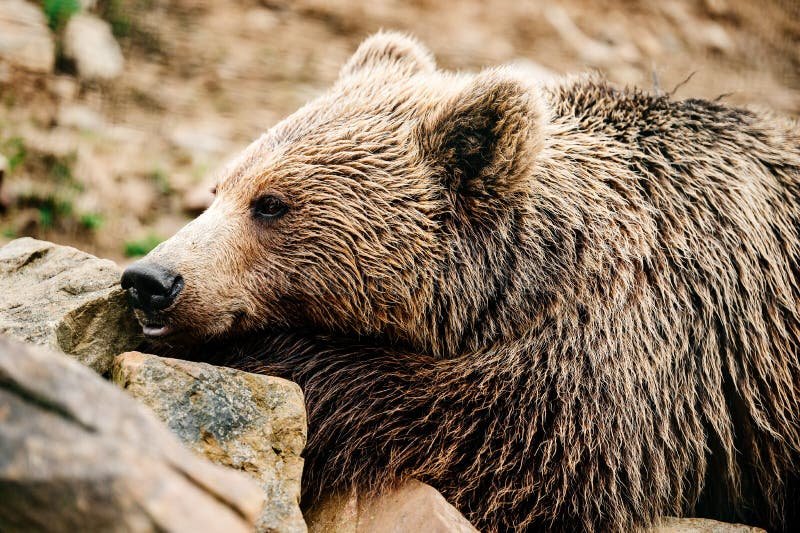
Like many wild animals, bears have their own personalities, habits, and territory. They can be incredibly curious, which sometimes leads them too close to humans for comfort. But let’s dig deeper into the specifics of bear behavior and safety. You might be wondering: what makes a bear dangerous? Are there particular situations that heighten the risk? Or how can we appreciate these animals while keeping ourselves safe? Let’s explore this fascinating topic together.
Understanding Bear Behavior
Bears are intelligent and adaptable creatures that thrive in various environments, from forests and mountains to national parks. Each bear species, like the grizzly or the black bear, has its own unique traits and behaviors. Understanding these differences is essential when considering their potential danger to humans.
For example, black bears are generally more timid and often prefer to avoid confrontations. On the other hand, grizzly bears can be more aggressive, especially when they feel threatened or when cubs are involved. The key to understanding whether a bear can be dangerous lies in knowing their behavior. Bears can perceive people as a threat in various situations—primarily when they feel cornered or if they’re protecting their young.
Here’s the thing: bears are more interested in food than in attacking humans. Most bear encounters don’t result in aggression. If a bear does approach, it’s often in search of something edible, like a leftover picnic or a poorly stored trash bag. So, taking steps to secure food while camping can significantly reduce the chances of a dangerous encounter.
Situations That Increase Risk
While bears aren’t constantly on the attack, certain scenarios can escalate tension and lead to dangerous situations. For instance, surprising a bear can trigger a defensive reaction. When hiking, making noise (like talking or singing) helps alert bears to your presence, allowing them to avoid you.
Another risky situation arises when a bear is surprised while it’s eating or foraging. In these moments, it may feel threatened and react. Likewise, if a bear is with cubs, it’s best to keep your distance. Mama bears are protective and can be very aggressive if they sense danger to their young.
Additionally, food-related issues can lead to danger. A bear that’s become accustomed to human food—due to improper storage practices—might approach people with less hesitation. This conditioning creates a cycle where bears become bolder, leading to more conflicts. Keeping campsites clean and adhering to bear safety practices significantly lowers risks.
Bear Species and Their Threat Levels
Not all bears are created equal when it comes to danger. The threat level often depends on the bear species, their habitat, and their individual temperament. Here’s a quick look at some common types of bears:
- American Black Bear: Generally shy and nocturnal, they usually avoid humans. However, they can become aggressive if they feel threatened.
- Grizzly Bear: More territorial and aggressive, especially females with cubs. They can be more dangerous in close encounters.
- Polar Bear: Rarely encountered by most people, but highly dangerous due to their size and predatory nature. They often see humans as prey.
Understanding these nuances helps you assess encounters more accurately. For example, if you’re in a national park known for black bears, keeping your distance and making noise will likely keep you safe. However, if you’re in grizzly territory, you may need to employ additional precautions.
How to Stay Safe Around Bears
So, how can you enjoy the outdoors and still prioritize safety? Here are some essential tips for bear safety:
1. Make Noise: Talk, sing, or carry bear bells. This alerts bears to your presence, reducing surprise encounters.
2. Store Food Properly: Use bear-proof containers or hang food away from your campsite. Never keep food in your tent.
3. Be Aware of Your Surroundings: Watch for bear tracks or droppings. If you see these, it’s best to go in another direction.
4. Travel in Groups: Bears are less likely to approach larger groups of people, so hike with friends whenever possible.
5. Know What to Do in an Encounter: If you see a bear, don’t run. Instead, slowly back away while keeping your eyes on the bear. If attacked, playing dead may be your best option with grizzlies, while fighting back is often recommended with black bears.
What to Do If You Encounter a Bear
You might be wondering, “What should I do if I see a bear?” The right response can make a significant difference. Here’s a step-by-step approach:
1. Stay Calm: Avoid panicking. Take slow, deep breaths to keep your mind clear.
2. Identify the Bear: Understand whether it’s a black bear or a grizzly. This knowledge can influence your response.
3. Make Your Presence Known: Speak calmly and assertively. This lets the bear know you’re human and not a threat.
4. Back Away Slowly: Avoid sudden movements. Keep your eyes on the bear without making direct eye contact.
5. Climb a Tree (If You Have Time): If it’s a black bear, climbing a tree can help. Grizzlies are excellent climbers, so this isn’t advisable with them.
6. Prepare for a Charge: Bears might bluff charge. Stand your ground, as most are just trying to scare you away.
Bears truly are fascinating creatures, but understanding their behavior and knowing how to stay safe is essential for anyone enjoying nature. By respecting their space and following safety practices, we can coexist with these magnificent animals.
So, whether you’re planning a camping trip or just curious about bears, remember: knowledge is your best tool. The more you understand bears and their behavior, the safer your outdoor adventures will be. After all, nature should be a place of wonder and respect, not fear. Enjoy the beauty of bears from a distance, and you’ll likely have a thrilling experience—without the danger!

